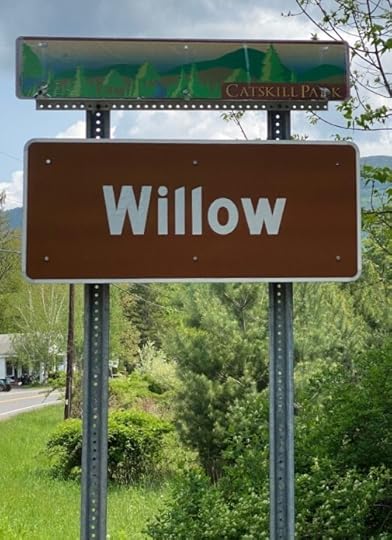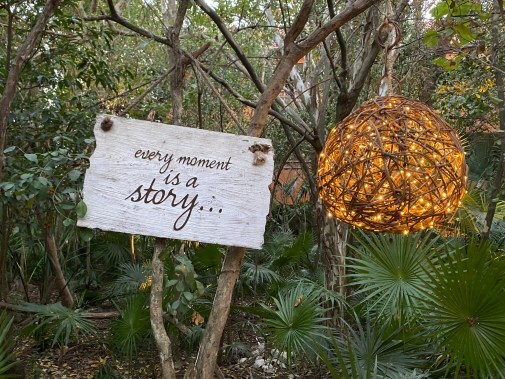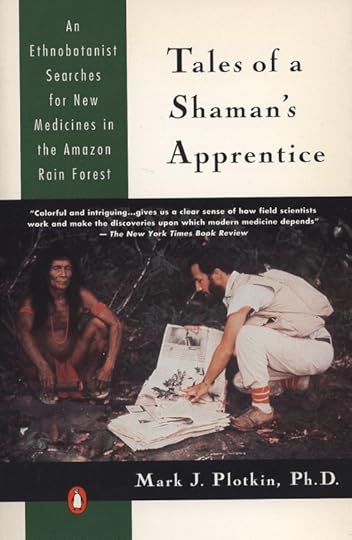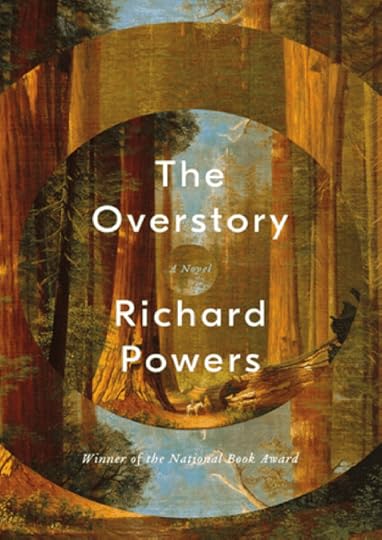Heather K. Jacobsen's Blog
October 4, 2024
Chewing Pine Needles. Adventures in Ethnobotany and Writing
On the side of the house where only my cat and I wander, asters have been blooming in tiny, white starbursts, their violet or orange centers like little bullseyes for bees. Goldenrod have burst into sprays of fluffy yellow spires, so heavy they arc like fireworks raining down. The two species have co-evolved to co-exist, I’d learned from The Light Eaters, knowing that together, their busy pattern of rods and discs in complimentary colors, attract more pollinators.
When a bare and forlorn patch of ground nearby begged me to complete this wild, woodland scape, also attractive to my human eye, I transplanted wayward asters and goldenrod from other random parts of my yard. I watered them for days, saw goldenrod and aster behind my eyelids closing for sleep, spotted them along roadways around town. I loved how their humble and understated beauty graced the autumn landscape, if you took the time to look.
And over a cup of Earl Grey one morning, I opened Braiding Sweetgrass for the first time since spring. The fresh, next page just happened to be the chapter called “Asters and Goldenrod.” Could the plants be talking to me?
Since my last post (three years ago!), I’ve been working on a new project. It’s a speculative novel set in a world where any medicine not created by the worldwide monopoly, Hatch Pharmaceuticals, is outlawed. But don’t worry, medicinal plants play a large role in setting the world right again.
I find fiction more fun, more creative than nonfiction, but with nothing but my own imagination to draw from and having never yet completed a novel, the dreaded imposter syndrome taunts my subconscious. Still many a sign has told me not to succumb.
The first sign was last spring, in the blue-gray Catskills garlanded with mist. At the driveway to the AirBnB I was about to share with three other writers for the weekend, a willow tree greeted me. How did it know I’d planned to work on my first chapter, my first main character, Willow? She is a modern apothecary who lives in the unincorporated Wilderness.

The opening scene—frozen daffodils—was inspired by a real-life occurrence the previous winter. But I worried it wasn’t a good enough hook. Nor were the plot elements compelling. And was Willow’s character intriguing enough? Was the prose overly poetic? Or too simple, banal? Frustrated at feeling so off course, I left the weekend following Siri’s different route home than the one I’d taken there, under gray-lined, billowy clouds and emotional gloom. I wound my way through whispering white pines and grassy meadows, feeling lost, sure my map was mistaken. Until a sign post announced, “Willow!” An unincorporated town, I found out. “Its a sign! A literal and figurative sign!,” my romance-writer friend, CJ Connolly said when I texted her.
Just because writing fiction was terra incognita, Willow showed me, did not mean I wouldn’t be able to find my way. After all, I’d started taking the train to the heart of Copenhagen by myself, when I was just seven years old. And I had gotten lost the first time. But a kindly man in a business suit, had helped me find my way, and I never got lost again. I just needed to keep going, see what was around the bend. Surely, helpers would be there when I needed them.
My second main character, Lance, is an ethnobotanist who owns an ayahuasca retreat center in the Amazon, which he uses to fund his research on plant medicine. So I interviewed my longtime hero and podcaster, the ethnobotanist Mark Plotkin, whose book, Tales of a Shaman’s Apprentice I’ve read twice. The first time was way back in 1996. It inspired me to get a Master’s in Ethnobotany, the study of how different cultures use plants.

And thanks to Dr. Edward Kennelly, ethnobotanist and professor at CUNY, I also learned how a gas chromatograph works.
A secondary character, named Grace, practices Traditional Chinese Medicine, and becomes an ally to Willow when they meet in prison. So I interviewed Dr. Thomas N Leung, herbology professor, pharmacologist and CEO of Kamwo Meridian Herbs in Chinatown, along with several of his colleagues.
And this spring, I braved feedback on my work during the Manuscript Academy‘s wonderful writer’s retreat in Tulum, Mexico. I left with encouraging and constructive feedback and some amazing, new friends.

This fall, I learned about Native American and colonial settlers’ uses of local plants during a personal tour of the Connecticut College arboretum, led by Dr. Manuel Lizarralde. And how to create medicines from backyard plants in a workshop led by Dr. Eugene Zampieron.
Even with my lifelong fascination for medicinal plants, I continue to learn. I’d already known, for instance, about the myriad benefits of dandelion, the wound healing properties of plantain (platango major), the liver-cleansing and cancer-killing effects of thistle, each of which are spotlighted in my book. But I did not know the scraped bark of weedy, wild cherry, has the most pleasant almond-extract aroma and is an effective cough suppressant, nor that mugwort under the pillow induces dreams. I snagged some stalks on my walk to the beach last week and put them under my teenagers’ pillows without their knowledge. The very next day, my son had his first dream in months. Nor did I know that you can chew white pine needles for Vitamin C—very handy in winter when access to fresh fruits and vegetables is limited.
 Dr. Lizarralde demonstrates.
Dr. Lizarralde demonstrates.
A couple of weeks ago, a penciled note written on my September calendar, months earlier, told me it was time to plan a visit to the New York Botanical Gardens—I needed visuals of tropicals in their conservatory for inspiration. And hours later, my husband asked me if I wanted to go to NYBG next Thursday for Climate Week. That timing was already uncanny. But when I saw the keynote speaker was the world-renowned ethnobotanist, Wade Davis, I was floored. I had no idea it was Climate Week (yes, sometimes I do live under a rock, or at least under a dense canopy of trees). Nor that he would be speaking. It was another sign!
Dr. Davis wove together his powerful stories of people’s inextricable link to their environment with his beautiful National Geographic photos—a Tibetan yak herder, an Amazonian boy with parrot, a Haitian woman in a mud bath—in a moving demonstration of the importance of cultural diversity in protecting biodiversity. He made the point that politics isn’t what changes the world. Storytelling is.
Was he speaking to me? Because cultural and biological diversity are both important themes in my book. I only hope I can portray them as eloquently as he does.
Just like aster and goldenrod, people and plants have coevolved. Only, we need plants way more than they need us. I hope that my fictional, somewhat exaggerated story, will serve as both a warning of what a future without access to nature might look like, and a hope in the potential so, so many plants have for healing.
By the way, did you know a cup of aster-leaf tea can reduce inflammation as well as stress and digestive complaints? And goldenrod can strengthen the kidneys and bladder. The leaves and flowers of both can be turned into a salve to soothe skin disorders.
As they both turn to seed and the nights become longer, I’ll be exploring to the darker story of my third main character, Penelope. She’s a health reporter in technocratic New York City, on the other side of the BioFree Zone from Willow and Lance, and one of the millions of victims of Hatch’s fertility treatments. She’s determined to tell the real story of health.
Until my next update, please follow me on Instagram, and check out these highly recommend books for autumn reading:
Nonfiction books on plant intelligence and ethnobotany

 Fiction but a lot of truths!
Fiction but a lot of truths!My favorite fiction book right now. If you love trees and forests, you must read.

The post Chewing Pine Needles. Adventures in Ethnobotany and Writing appeared first on Heather K. Jacobsen.
August 30, 2021
Irony of the Writer’s Blog
What is there to write about if I’m trying to get published, but no publisher will publish something already published, even if only posted to my humble little blog? I can’t give excerpts of my current completed work. Nor would I dare give excerpts of any works-in-progress—I’m superstitious about sharing too much before I consider it complete. I suppose I could use my writer’s blog as a journal, but unless it tells a good story, is a journal entry of any interest to anyone but me? Besides, if I spend too much time blogging, how will I ever have time to do my actual writing?
But with the start of a new school year (and, thus, a new work-year for me), I feel the need to announce to the world (or all you five, amazing, loyal readers), what exactly I’ve been up to all these years between disbanding the online health and wellness magazine I used to run, and now. So maybe that’s the best use of my writer’s blog.
Starting in 2015, I moved from Texas to Connecticut with a six- and eight-year-old, and turned an old eighties-style house into a modern haven, in which I nurtured my children into healthy and confident twelve- and fourteen- year olds. One just started high school (today!), and the other, 7th grade.
Then I developed adenomyosis, a form of endometriosisShortly after our move, I started Crossfit, gave a TEDx talk and completed an e-book on gluten sensitivity.
Then I developed adenomyosis, a form of endometriosis, with alarming symptoms and a devastating prognosis. But instead of giving in to the threat of having my uterus taken from me, I went into what I do best, research mode. And a year later, I reversed the symptoms, got back to health, and started a Facebook Group for other women who would like to know how to heal from adenomyosis and endometriosis, without the use of synthetic hormones or surgery.
In the meantime, when my father showed signs of emotional abuse toward my daughter at a family gathering, I began to learn some things about him that I’d never comprehended before. And over the course of many months, when it became clear he had no intentions of stopping his abuse nor apologizing for his actions, he and I, and consequently my mother, became estranged. For many more months afterwards, I fell into a depression as I grieved the loss of my parents, shed an old self, and finally respawned.
Through all that, I pushed back the boundaries of the forest encroaching on my backyard that had long been neglected by the previous two owners. In its place, I built a Zen garden. I also resurrected the existing garden that someone, several owners previous, had once so lovingly tended, and I planted a new butterfly garden that several monarchs and hundreds of bees visited this summer.
As part of my respawning, I rekindled my first passion in life (before my father took it away from me), and made sure to write every day. (Just not on a writer’s blog). I had a few poems published (online), I started a Writer’s Group and led it for a year, and I completed a memoir. Maybe I should have made that announcement a few months back, when I had completed the final draft. But I jumped right into the notoriously harrowing process of querying, which took just as much of my time.
As I write in my query letter, the memoir is about how “scientific investigation told me what my subconscious knew all along—that my body had been shaped by trauma I’d long since forgotten, and the only way to heal was to expel the one toxin that kept triggering me.”
But seriously, how can you sum up what a memoir is all about, in just one sentence? Yes, it’s about the link I discovered between “Adverse Childhood Experiences” (ACEs), aka, in my case, emotional abuse I suffered as a child, and autoimmune disease. That is, my thyroid condition, endometriosis and food sensitivities.
But it’s also about how you can be stressed, and not even realize it. It’s about opening your eyes to the blindness narcissism causes when you’re under its spell. It’s also about learning to feel all of your emotions, even the difficult ones, so they don’t metastasize and smother the good feeling ones. And its about healing through gardening and meditation and self-compassion (and sometimes a little medical marijuana).
That’s kind of a lot to put into a query letter. I hope I did a good job.
So now I’m on to my next project. Or two.So that long silences or the form-letter rejections don’t shake my confidence as a writer, I started a novel earlier this year. I won’t tell you its working title or even what its about. Just like I never told friends and relatives the names of my babies until they were born. Yes, even science-minded people can still be superstitious. 
And even though I’ve been trying to get away from science-writing, as I am so much more compassionate about creative writing, after my Facebook Group hit 7500 members, I realized there was a need out there for a practical discussion on how to heal naturally from endometriosis and adenomyosis. So I have an outline started for a Handbook. I don’t expect to achieve fame and fortune from it, but for the same reason I started the Facebook Group, I feel it would be selfish of me not to share all that I’ve learned about endometriosis. I just can’t stand the thought of any woman being pushed into hysterectomy, unnecessarily.
So, see I’ve been busy. But I’ve just kept it all to myself. I hope I won’t have to be secretive for much longer.
What would you like to see in my next writer’s blog post?
The post Irony of the Writer’s Blog appeared first on Heather K. Jacobsen.
April 1, 2020
The World on Pause
Maybe we all just need to take a pause
breathe only our own air for a change
tend to our own gardens
Spray people-and-pet-safe “Go Away”
protect the tulips
nosing out of the ground
Hear only our own thoughts
or the crinkling in the wind
last winter’s papery leaves
surprisingly loud
when the whole world has stopped
Maybe we need to unroll our yoga mats
become more limber
bend with the lotus of change
ever-unfurling around us
Let go of the non-essentials
those cravings
relationships
we’re better off without
Surrender the control
we never really had
those best laid plans
that often go awry
Reflect on the environmental impact
of our consumption of toilet paper
Maybe we should all play music from our balconies
Sing show tunes, play cello suites over Twitter
Forest bathe in the woods
just us and the kids
Run through the aquarium
just us and the penguins
Make more than one pie on Pi day
homemade nachos with all the fixins
Maybe we should stand in the middle of time
just being
not doing
Turn off alarms
finish dreams
Peer through the telescope
at the pockmarked moon
Zoom in and out of bubbles
on the CoronaVirus Map
See how small
how united of a world
we really are
(I am grateful to Headline Poetry & Press for originally publishing this on March 31, 2020.)
"Maybe we all just need to take a pause; breathe only our own air for a change" #coronavirus #pandemicpoetry
Click To Tweet
The post The World on Pause appeared first on Heather K. Jacobsen.
July 18, 2019
‘Creamy’ Zucchini Soup. Gluten-Free, Dairy-free, Paleo.
My son eats everything. Except zucchini. Imagine that. He’ll eat Ghost pepper sauce, he’ll eat curried spinach (palak paneer), and even beets. In fact he probably has the most adventurous palate of any kid I know. So why not zucchini (or any squash for that matter)? Isn’t it one of the most bland foods out there?
Enter zucchini soup. This he will eat, and happily. And he even comes back for more.
This recipe is a great way to use up your summer bumper crop and is enjoyable either warm or chilled.
'Creamy' Zucchini Soup. Gluten-Free, Dairy-free, Paleo.
3 Tablespoons olive oil
2 cloves garlic (*chopped)
salt and pepper (to taste)
2 pounds zucchini (sliced)
2 1/2 cups chicken stock (**homemade is best!)
In a large pot, sauté the garlic over medium-low until soft (about 7 to 8 minutes). Add the zucchini, turn the heat to medium and cook another 10 minutes, stirring frequently. Add the chicken stock, turn up the heat until it simmers, then return heat to medium until the zucchini is soft, about 10 minutes more.
Using an immersion blender, puree the soup until it is ‘creamy’ and smooth. Alternatively, you can puree it in a blender, but be sure to do it in batches, or you will get an explosion of hot soup all over the kitchen. (I know. I learned the hard way ;-). )
Top with optional garnishes, and serve with grain-free bread (***see recipe below).
*Alternatively, I have also used garlic scapes when they arrived in our CSA box, and I highly recommend them if you have some! If you need to make this low FODMAPs, then sauté the garlic and strain, returning the oil back to the pan before adding zucchini.
Optional add-ons: fresh squash blossoms, sautéed mushrooms, extra sautéed garlic scapes or julienned roasted jalapeno peppers
July 17, 2019
Paleo Lamb Stew with Olives and Apricots
Paleo Lamb Stew with Olives and Apricots
3 Tablespoons olive oil (divided)
2 pounds lamb (cut for stew)
1 inch fresh ginger (minced)
2 cloves garlic (*minced)
1 Tablespoon cumin
2 teaspoons paprika
1 teaspoon cinnamon
1 teaspoon lemon zest
sea salt and pepper (to taste)
12 ounces chicken broth (homemade is best)
2 medium carrots (chopped 1/2 inch thick)
1 1/2 cups castelvetrano olives (whole, pitted preferred)
1/2 cup dried apricots (*chopped)
2 Tablespoons arrowroot starch
Heat 2 tablespoons oil over medium heat. Add the lamb and brown, about 3 to 4 minutes each side. Remove the lamb (and drippings) from the pot and set aside.
Add another tablespoon of oil to the pot and reduce the heat to medium. Add the ginger and garlic and cook until sticky and fragrant, about 3 to 4 minutes. Add the cumin, paprika, cinnamon, lemon zest, salt and pepper, and cook until it becomes paste-like, stirring constantly, about two minutes. Return the meat to the pan, add the chicken broth and bring to a boil. Then immediately reduce to a simmer. Cover and cook for 1 1/2 hours.
Taste the sauce and adjust the seasonings, if necessary. Add the carrots and cook for fifteen minutes. Then add the apricots and olives, cooking for another five minutes.
Meanwhile, create a slurry with the arrowroot starch: place the arrowroot in a small bowl; add a few tablespoons of sauce from the pot to the bowl; then stir until well combined. Do not attempt to skip this step, because if you add arrowroot directly to the pot, you will only end up with lumps.
Add the slurry back to the pot, stirring until well combined. Simmer on medium for about three minutes until stew has reached desired thickness. Do not overcook or the arrowroot starch will begin to break back down.
Serve with cauliflower “rice” pilaf (**see recipe below).
*Use garlic-infused oil, or omit for low FODMAPs (there is plenty of flavor already without the garlic!). Also, apricots should be avoided on lowFODMAPs, so use sparingly, or let them flavor the sauce, but don’t eat them on your plate. Give them to your kids instead. 
Plantain Pancakes. Gluten-Free, Grain-free, Paleo
Plantain Pancakes. Gluten-Free, Grain-free, Paleo
2 green plantains (peeled and cut into large chunks)
4 eggs
2 teaspoons vanilla
3 Tablespoons coconut oil (melted, plus extra for frying)
1/4 teaspoon salt
1/4 teaspoon baking soda
1 cup berries (frozen or fresh, organic preferred. optional)
1/4 cup butter, ghee or Earth's Balance soy-free buttery spread (optional)
1/4 cup maple syrup (optional)
Preheat the oven to 170 degrees Fahrenheit.
Place all ingredients in a blender and puree until smooth.
Heat a heavy-bottomed cast iron skillet over medium-high. Melt enough coconut oil to coat the bottom. Pour one ladle-ful of batter onto the hot skillet. Cook until bubbles start to come to the surface, about three or four minutes, then flip. Cook until browned another two or three minutes. Transfer the pancake to a plate and keep warm in the oven. Repeat the process until you have enough pancakes to feed your family. You can save any leftover batter for another day, or cook the entire batter now and then gently reheat cooked pancakes on a busy weekday morning.
Serve with your favorite toppings. We like fresh or frozen (organic) berries, butter (or butter substitute) and a dollop of maple syrup.
Mild Sriracha Sauce? Bell Pepper-Garlic Sauce. low FODMAPs, Kid-Friendly.
Mild Sriracha Sauce? Bell Pepper-Garlic Sauce. low FODMAPs, Kid-Friendly.
1 red pepper (whole)
3 cloves garlic (minced)
3 Tablespoons olive oil
1/2 teaspoon salt
1/4 teaspoon maple syrup (optional)
1 1/2 Tablespoons distilled white vinegar
Preheat oven to 425 degrees Fahrenheit.
Rinse the pepper then place in small pie or cake tin in the oven. Turn every 10 to 15 minutes until sufficiently blistered on each side. Remove from the oven and let cool.
Meanwhile, add the olive oil and garlic to a small saucepan and gently warm over medium heat, stirring frequently. Cook until the garlic is sticky and straw colored, about five minutes. Remove from heat. Strain and discard the garlic, if you need to avoid low FODMAPs.
When the pepper is cool enough to handle, peel off the outer skin and discard. Cut the pepper into strips, discard the seeds, but retain the juices. Place the pepper, juices and garlic-infused oil in a small food processor or herb grinder. Add the salt, maple syrup and vinegar. Process until smooth. Store in an airtight container in the fridge and use wherever recipes call for Sriracha.
Gluten-Free Play Dough Recipe
Gluten-Free Play Dough Recipe
1 cup brown rice flour
1 cup cornstarch
1 cup salt
6 teaspoons cream of tartar
1 1/2 cups water (or less)*
a few drops of food coloring
Stir dry ingredients in a mixing bowl. Place mixture in a skillet and turn the temperature to low heat. Slowly add the water and stir until mixture becomes stiff. Too much water will ruin the consistency, so only add a little at a time.
When the dough starts to pull away from the side of the pan, it is ready. Make sure all the dough is pulling away from the sides. If the center is still more liquid-y, keep stirring until the consistency is the same everywhere. Remove from heat.
When the dough is cool enough to knead, separate it into as many batches as you want. Then add different food colors to each batch, kneading until the color is thoroughly mixed in. Alternatively, If you only want one color, you can actually add the food coloring into the skillet with the water when it is cooking.
Store in a ziploc bag.
*You could substitute some of the water with scented extract, such as vanilla, but if there are kids in the class with other food allergies, you may want to keep it nut-free, too.
Pickled Green Beans
Pickled Green Beans
1 bunch green beans
2 teaspoons pure salt (no caking agents)
24 ounces water
2 mason jars
Dill or other seasonal herb of your choice (chopped)
Fill each mason jar with 12 ounces of water. Add one teaspoon of salt to each jar, and stir to dissolve.
Rinse and trim the green beans. Stuff them into each jar. Add the dill or other herb. Make sure the water covers the green beans, but there is about an inch of air between the water and the top of the lid. Cover tightly with the mason jar lids.
Leave on the counter for 3 or 4 days, and burp once a day to release accumulated gases. After the 4th day your pickles should be done, although they can continue to ferment. Store in the fridge and use for snacking, on salads, or as a healthy garnish on your dishes.



